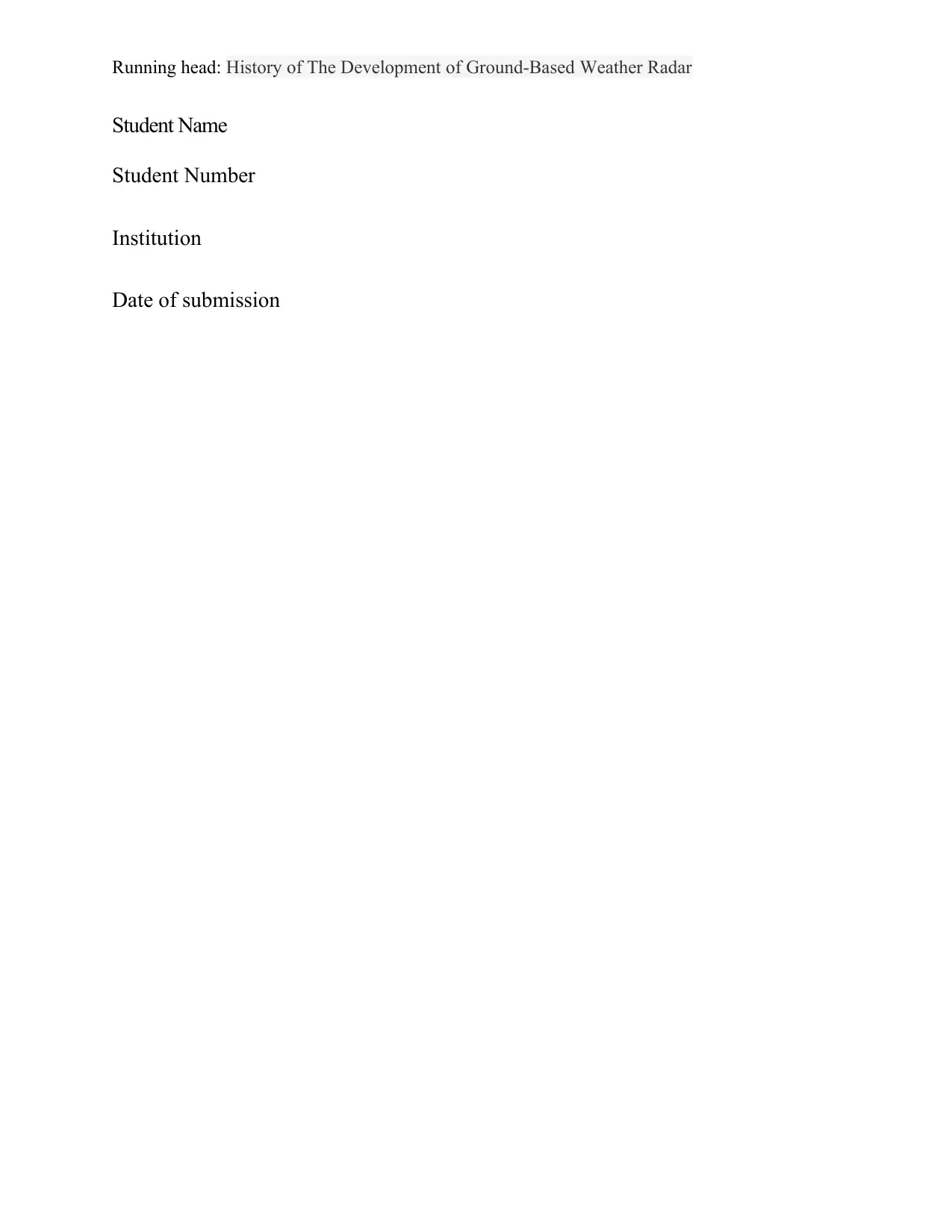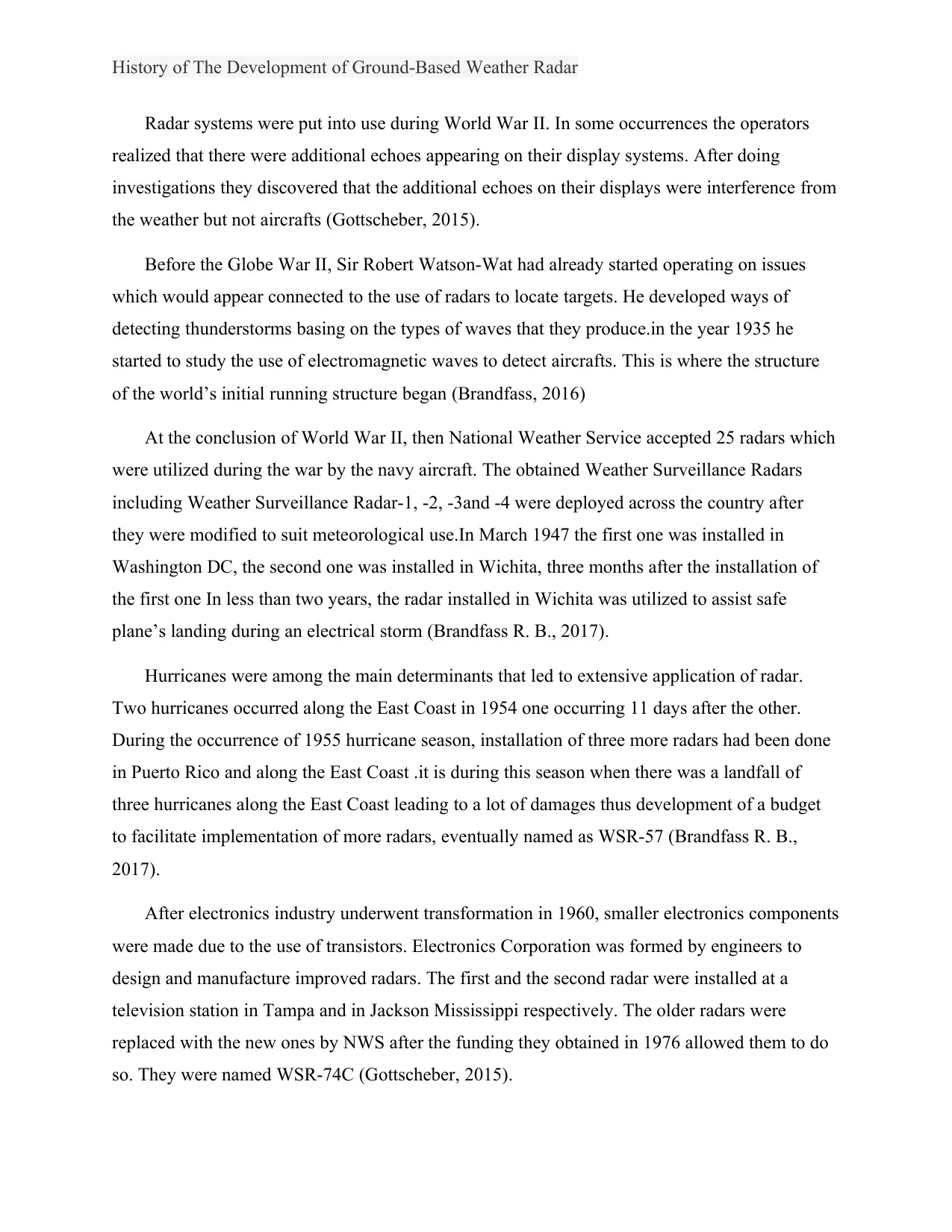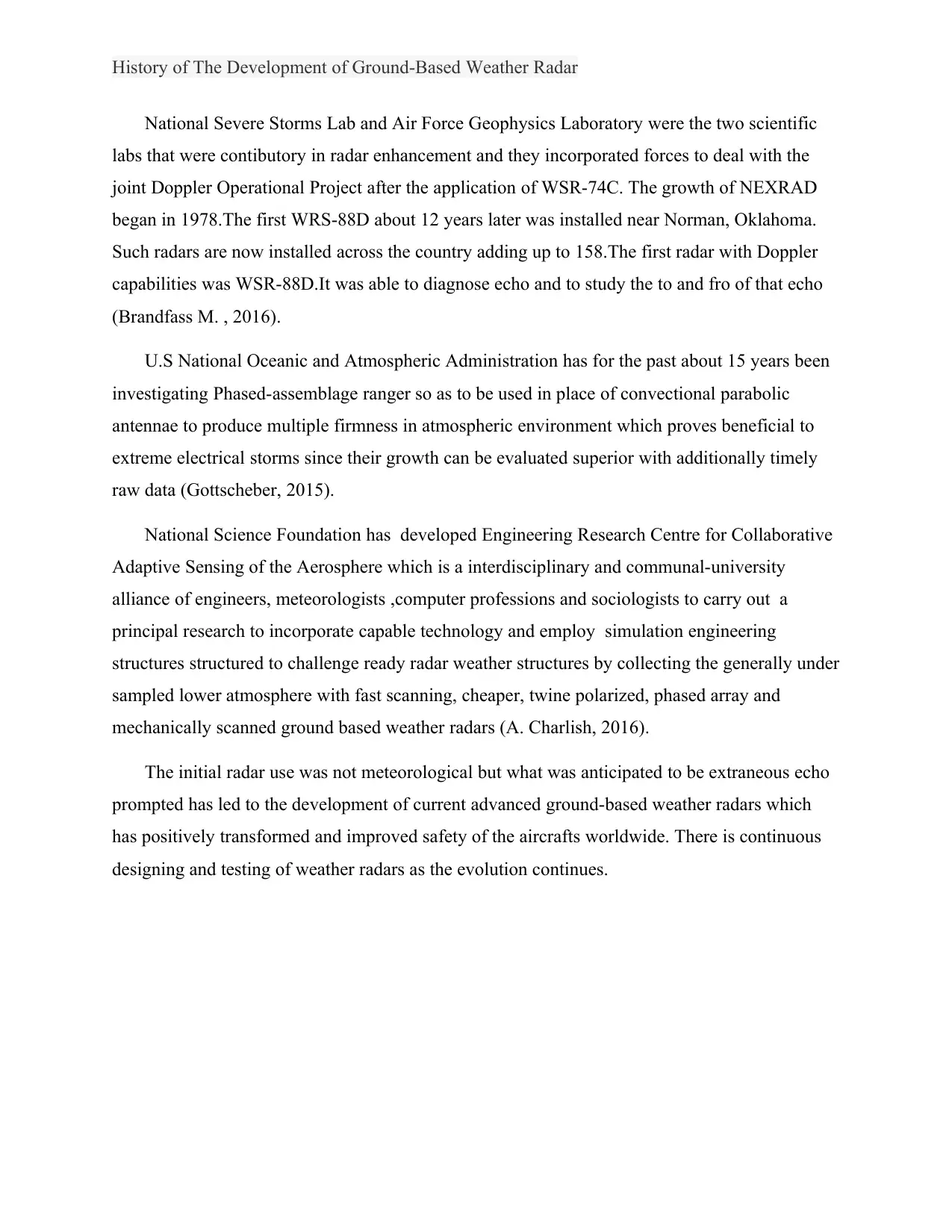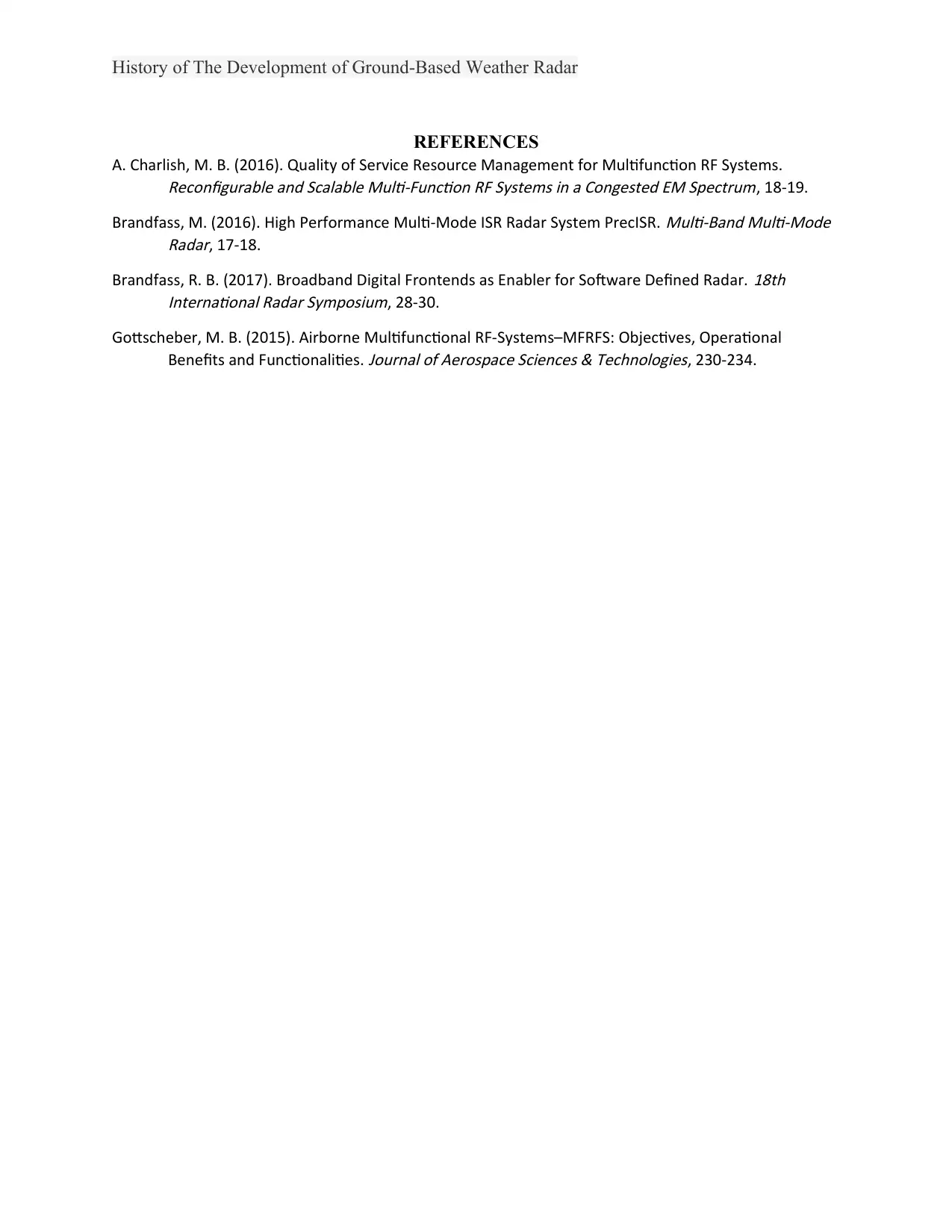Tracing the History: Development of Ground-Based Weather Radar
VerifiedAdded on 2023/05/30
|4
|886
|60
Essay
AI Summary
This essay traces the historical development of ground-based weather radar, beginning with its accidental discovery during World War II when radar operators noticed unexplained echoes caused by weather phenomena. It highlights Sir Robert Watson-Watt's early work on detecting thunderstorms using electromagnetic waves and the subsequent deployment of modified wartime radar systems across the United States by the National Weather Service. Key milestones include the installation of the first weather surveillance radars in Washington D.C. and Wichita, their use in assisting safe plane landings, and the impetus provided by devastating hurricanes in the 1950s, which led to the development and implementation of more advanced radar systems like the WSR-57. The essay further discusses the technological advancements of the 1960s, the development of the WSR-74C, and the collaborative efforts of scientific labs in enhancing radar capabilities, culminating in the NEXRAD program and the deployment of WSR-88D Doppler radars. It also touches on ongoing research into phased-array radar technology and collaborative adaptive sensing to improve severe weather monitoring, emphasizing the continuous evolution of weather radar technology to enhance aviation safety and weather forecasting.
1 out of 4




![[object Object]](/_next/static/media/star-bottom.7253800d.svg)